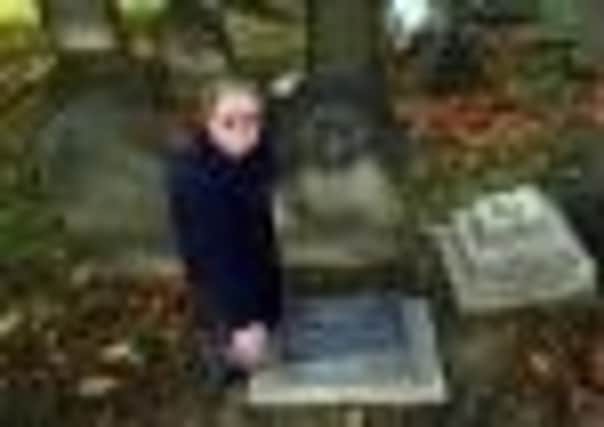Aristocrat in lifeboat rescue tragedy honoured


Now 150 years after the tragedy struck, the nobleman is set to be honoured by his descendants when his decaying pauper’s grave is replaced with a new headstone in recognition of his bravery.
The plaque will be revealed as part of a special programme of events, hosted by the RNLI, which will mark the anniversary of the disaster.
Advertisement
Hide AdAdvertisement
Hide AdJohn Porter, a spokesman for Scarborough Lifeboat, said: “Scarborough has had many tragedies at sea over the years, with lifeboat crew being lost on several occasions. Each year we hold a memorial service at St Mary’s Church to commemorate the men who have given the ultimate sacrifice and it’s fitting that on the 150th anniversary of the death of Lord Beauclerk that his courageous actions are remembered in this way.”
It was a dark and stormy afternoon on November 2, 1861, when the lifeboat Amelia was overwhelmed by mountainous waves while trying to reach the South Shields schooner Coupland, which had foundered on rocks near Scarborough’s historic Spa.
It was Amelia’s first and last service mission and cost the lives of Thomas Brewster and John Burton, two lifeboat men in their 20s, who both had young families.
Three bystanders, including Lord Charles, who was a descendant of Charles II and Nell Gwyn, also died.
Advertisement
Hide AdAdvertisement
Hide AdWhile three of the men were never recovered, Lord Charles was hauled ashore but died from his injuries in the Spa’s music room.
The aristocrat was awarded a rare posthumous silver medal by the RNLI, as well as an award from the Board of Trade.
But despite his gallantry, Lord Charles did not receive a hero’s burial at the family mausoleum of the Dukes of St Albans at Redbourne, Lincs, where he was born in 1813.
Instead he was buried in Scarborough’s Dean Road Cemetery by his elder brother, Lord Frederick Beauclerk, in a perishable sandstone grave, which cost just seven guineas.
Advertisement
Hide AdAdvertisement
Hide AdLord Frederick intended to return to make more permanent arrangements for his brother but he died before he could carry out the task.
In 2008, while researching a book on Nell Gywn, Lord Charles’s descendants visited Scarborough to hunt for the modest grave of their relative.
His great grandson, Lord John Beauclerk, 62, from Oxford, said: “My nephew and I found his grave and we discovered there had been quite a lot of research done on the subject, particularly by Scarborough journalist Marie Belfitt. Back in 1978 she had written in great detail about the tragedy when the RNLI announced it would be calling a second boat after the ill-fated Amelia and we got really interested.
“For the Beauclerks it’s a bit of family history we feel guilty about. Why was this nobleman left here to rot under a mediocre grave in Scarborough? How could this be? That’s why we started looking into the story.”
Advertisement
Hide AdAdvertisement
Hide AdLord John and his nephew Charles, 45, who is heir to the Dukedom of St Albans, discovered their ancestor was poor after he and his two brothers were shunned by their family as a result of their impetuous ways.
“They probably would have been given the social equivalent of Asbos in this generation,” he said.
“We think Charles was in Scarborough to get money. The town was full of ship owners and we think he was looking for backing for an invention for propelling steam ships.”
Lord John believes the poor financial position of the brothers was the reason his ancestor was never given a nobleman’s burial.
Advertisement
Hide AdAdvertisement
Hide AdAnd keen to commemorate the sacrifice made by their relative, the Beauclerks have commissioned North Yorkshire stonemason Robin Atkinson to carve a new headstone.
“This time it will be made out of granite so the inscription will serve the next 100 years and the people of Scarborough won’t be writing about this disgraceful burial of one of our family members,” said Lord Charles.
“We are very proud of him in the respect he was a very brave man.”
Tomorrow and Wednesday members of the Beauclerk family, including Lord John and his sister Lady Caroline Ffrench-Blake, will join Scarborough RNLI in commemorating the disaster.
Advertisement
Hide AdAdvertisement
Hide AdLord John said: “The lifeboat men all know about it because they lost a couple of their crew. They are going to take us out to lay a wreath where the disaster happened and then there will be an inspection of the new grave.
“The following day the RNLI standard bearer will be at the graveside and there will be a short service and presentation. It’s a big event for us and we are really looking forward to it.”
Sea drama that shocked locals
The lifeboat tragedy of November 2, 1861 was one of the most memorable in Scarborough’s history.
Taking place just yards off the Spa walls, it was witnessed by many.
Advertisement
Hide AdAdvertisement
Hide AdIn the years to come Henry Redmore, Ernest Roe, Paul Marny and JN Carter all painted the tragedy.
The Coupland was trying to enter Scarborough’s harbour when her sails were disabled and she was forced onto rocks, leading to the death of five volunteers during the rescue attempt when the vessel struck the lifeboat. Rocket lines later saved all six members of the Coupland’s crew, but both boats were lost at sea.
The wreck of the Coupland was recently uncovered by low tides in the South Bay.
The new memorial to Lord Charles Beauclerk reads:
Lord Charles Beauclerk 1813-1861 Soldier Artist Inventor A Descendant Of Charles II and Nell Gwyn
On The 150th Anniversary of The Wreck of The Scarborough Lifeboat Amelia This Stone Placed In His Memory 2nd November 2011
By The Descendants Of His Nine Orphan Children
He Gave Life to Save Life